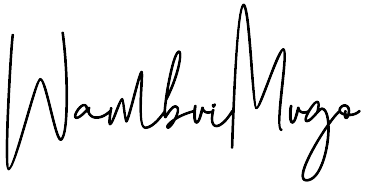How to Get Your First Client on Upwork & Fiverr

So, you’ve made the leap into freelancing. You’re wondering how to get your first client on Upwork and Fiverr.
Don’t worry; I’ve been there too.
Contrary to popular opinion, finding your first client does not have to be a recurring nightmare.
As someone who has passed $60K in earnings through Upwork, I can tell you that there are some things that you can do to stand out, land clients, and get paid.
Success in freelancing is about being intentional and smart. Keep in mind that everyone on Upwork is a warm lead already looking for your services.
Here are my top tips that work.
But first, let’s see how they work.
Upwork
- Clients Post Jobs: On Upwork, clients create job listings detailing the work they need to be done. This can include various types of projects, from short-term tasks to long-term contracts.
- Freelancers Submit Proposals: Freelancers can browse these job listings and submit proposals using Upwork’s virtual currency called Connects. Each proposal includes a cover letter, a proposed budget, a portfolio, and file attachments if relevant.
- Review of Proposals: Clients review the proposals they receive, evaluating them based on the freelancer’s qualifications, experience, and proposed rates.
- Client Decision: Clients select the freelancer they believe is the best fit for their project. In some cases, clients might choose not to hire anyone if they are not satisfied with the proposals or if their project requirements change.
- Fees: Upwork charges freelancers a 10% fee on the earnings they make for using the platform and to reduce spam.
Fiverr
- Clients Create Listings: On Fiverr, clients can browse and search for gigs, which are service packages created by freelancers. Each gig outlines the service offered, pricing, and delivery time. In addition, clients can also post orders of their job requirements for freelancers to apply to.
- Freelancers Offer Gigs: Freelancers set up gigs with detailed descriptions of what they offer, pricing options, and additional services. Clients select and order these gigs based on their needs.
- Client Orders Gigs: Clients choose from the available gigs and place an order directly through the platform. If a client is unsure or if their needs change, they might cancel or not proceed with the order.
- Fees: After completing an order, freelancers receive 80% of the client’s cleared payment in their account, with a holding period of 14 days (or a shorter holding period for Top Rated, Fiverr Pro, or other eligible programs).
How Do You Get Your First Client?

- Set Goals
Setting clear goals is the first step to finding clients as a new freelancer. Start by figuring out what you want from freelancing—whether it’s the freedom to work on various projects, gain experience, or focus on a specific field.
Here’s how to set goals for freelancing:
- Identify Your Priorities: Decide if you value flexibility, gaining experience, or specializing in a particular area.
- Define Specific Objectives: Set clear, measurable goals like “land my first client within a month” or “secure three projects in my chosen field.”
- Create a Plan: Outline the steps needed to achieve your goals, such as networking, improving your portfolio, or applying to relevant job boards.
- Track Your Progress: Regularly review your progress toward your goals and adjust your strategy if needed.
- Stay Flexible: Be prepared to adjust your goals as you learn more about freelancing and your preferences.
- Polish Your Profile
Your profile is the first thing clients see so make it stand out.
- Headline: Keep it clear and specific. Instead of a vague title like “Writer,” go for something more targeted like “SEO Content Writer Specializing in Health and Wellness.” This not only tells clients what you do but also helps you show up in search results.
- Description: Your profile description should show what makes you unique. Are you great with social media? Do you have experience in a niche market? Share that. Include keywords like “freelance graphic designer,” “virtual assistant,” or “email marketing expert” naturally in your description.
- Portfolio: Showcase your best work. Even if you’re just starting, create samples or mock projects. If you’re a writer, consider sharing a few blog posts. If you’re a designer, upload some of your designs. Weave your experience into a take, make it relatable, and hook your clients.
- Start Small but Think Big
It’s tempting to go after big projects right away, but when you’re just starting, smaller gigs can be your best friend. Here’s why:
- Build Credibility: Smaller projects, like creating a single blog post or designing a social media graphic, are easier to land and complete. These will help you build your ratings and accumulate positive reviews.
- Gain Experience: By taking on smaller jobs, you can hone your skills, understand client expectations, and learn how to manage deadlines—all of which prepare you for larger projects in the future.
- Expand Your Network: Completing smaller gigs successfully helps you build relationships with clients who might return with bigger opportunities or refer you to others.
- Gradual Growth: Starting small allows you to gradually increase your workload and responsibilities. As you build your reputation and experience, you’ll be in a better position to tackle larger, more complex projects.
- Master the Art of Proposal Writing
Writing a winning proposal is like crafting a pitch. You want to catch the client’s attention and show them why you’re the right fit. Remember that people buy solutions.
- Be Personal(ized): Start by addressing the client by name which you can get from their client history. Be friendly. Mention specifics about their project to show that you’ve read their job posting carefully and you’re genuinely interested. For example, “Hi (Client’s Name), I noticed you’re looking for someone to create engaging content for your XYZ beauty blog.
- Focus on Value: Clearly explain how your skills can solve their problem. In your application, start by offering value upfront. Shift the focus from you and make the client your hero. Demonstrate how your skills provide a solution to their business and show what sets you apart. This not only shows that you’ve done your homework but also gives them a taste of what you can bring to the table.
- Be Concise: Keep your proposals clear and to the point. Long, rambling messages are less likely to get read. This doesn’t mean that you undervalue yourself, show your success track record and charge accordingly.
- Be Patient and Proactive
Freelancing is a numbers game.
You might send out ten proposals before you get one response, but persistence pays off.
- Stay Active: On Fiverr, use buyer requests to pitch directly to clients. On Upwork, keep your profile updated and regularly check for new job postings. The more you put yourself out there, the better your chances of landing a gig.
- Follow-up: If a client doesn’t respond right away, it’s okay to send a polite follow-up message after a few days. It shows that you’re serious about the opportunity.
- Optimize Your Profile for Keywords
Make sure your profile is optimized with relevant keywords.
But remember, it’s not about stuffing keywords; it’s about using them naturally.
- Keywords Examples: Integrate terms like “SaaS copywriter,” “Fiverr gigs,” “social media manager,” and “SEO expert” in your profile and proposals.
- Long-tail Keywords: Use phrases like “affordable freelance graphic design” or “virtual assistant for small businesses” to target more specific searches.
- Make It About Them
When reaching out to clients or writing proposals, always focus on their needs and how you can address them. Don’t talk too much about yourself. Here’s how to make your communication stand out:
- Solve Their Problems: Frame your message around solving their specific challenges. Most clients want to save time, money, or effort. If you can demonstrate how your services will achieve one of these goals, you’re already making a strong case.
- Understand Their Needs: Take the time to research and understand the client’s brand, their goals, and what they are looking for. This shows that you’re genuinely interested in their success, not just looking for a quick job. Tailor your proposal like a bespoke suit.
- Keep Learning and Growing
Freelancing is a constantly evolving field. The more you learn, the more valuable you become.
- Invest in Yourself: Take online courses, attend webinars, and read up on industry trends. The more skills you acquire, the more services you can offer.
- Stay Updated: Follow industry blogs, join freelance communities, and network with other freelancers to stay in the loop about the latest tools and techniques.
Wrapping Up
To succeed on Upwork and Fiverr, treat every application as an opportunity to communicate the value you can offer a potential client.
Even if you don’t land the gig, you make yourself memorable and can be considered for a future opportunity.
This has happened to me too many times to count.
I hope you now have the confidence to apply and land those initial gigs that will start your freelancing career.
Subscribe to our newsletter for more tips, and check out the Freelance Mastery Hub; a great resource for personalized coaching services for your freelance career.
It’s time to turn your freelancing dreams into reality!











